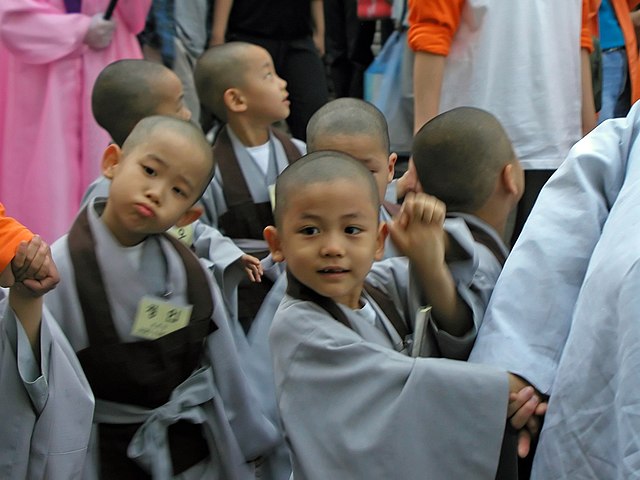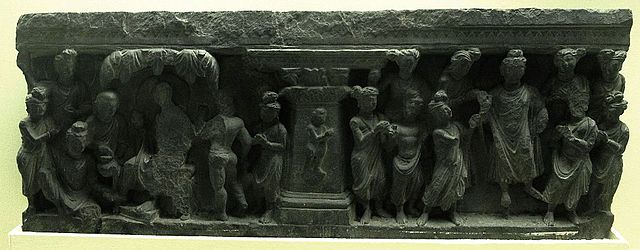A sāmaṇera (Pali), Sanskrit: श्रामणेर, is a novice male monastic in a Buddhist context. A female novice is a śrāmaṇerī or śrāmaṇerikā.
Sāmaṇeras in Thailand
Sāmaṇeras from the tradition of Korean Buddhism
Thai novices sweeping temple grounds
Rāhula was the only son of Siddhārtha Gautama, and his wife, princess Yaśodharā. He is mentioned in numerous Buddhist texts, from the early period onward. Accounts about Rāhula indicate a mutual impact between Prince Siddhārtha's life and the lives of his family members. According to the Pāli tradition, Rāhula was born on the day of Prince Siddhārtha's renunciation, and was therefore named Rāhula, meaning a fetter on the path to enlightenment. According to the Mūlasarvāstivāda tradition, and numerous other later sources, however, Rāhula was only conceived on the day of Prince Siddhartha's renunciation, and was born six years later, when Prince Siddhārtha became enlightened as the Buddha. This long gestation period was explained by bad karma from previous lives of both Yaśodharā and of Rāhula himself, although more naturalistic reasons are also given. As a result of the late birth, Yaśodharā needed to prove that Rāhula was really Prince Siddhārtha's son, which she eventually did successfully by an act of truth. Historian H.W. Schumann has argued that Prince Siddhārtha conceived Rāhula and waited for his birth, to be able to leave the palace with the king and queen's permission, but Orientalist Noël Péri considered it more likely that Rāhula was born after Prince Siddhārtha left his palace.

The Arhat Rāhula, Nanbokucho period, Japan
Just before the prince leaves the palace for the spiritual life, he takes one look at his wife Yaśodharā and his just-born child. 7 years after attaining Buddhahood the Buddha visited Kapilawastupura again on the behalf of Minister Kaludaiy
Ordination of Rāhula, Indian Museum, Kolkata
Statue of Rāhula as monk at Ping Sien Si, Pasir Panjang, Perak, Malaysia







